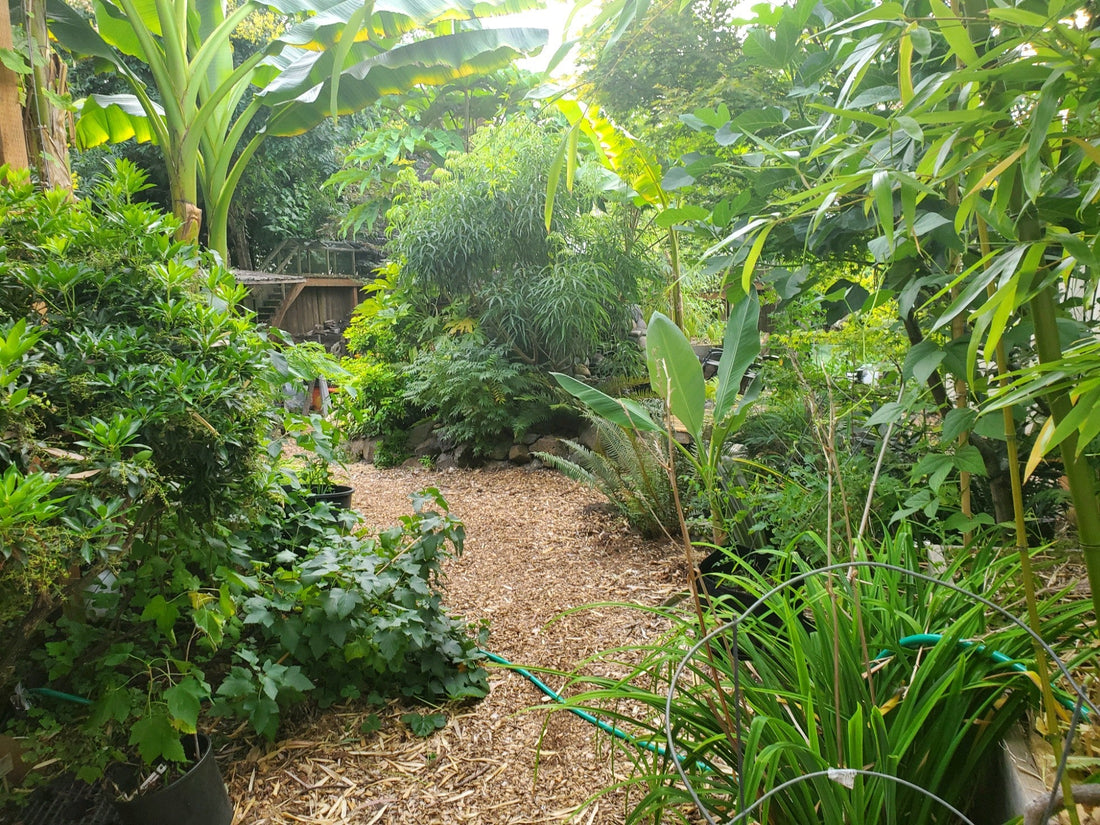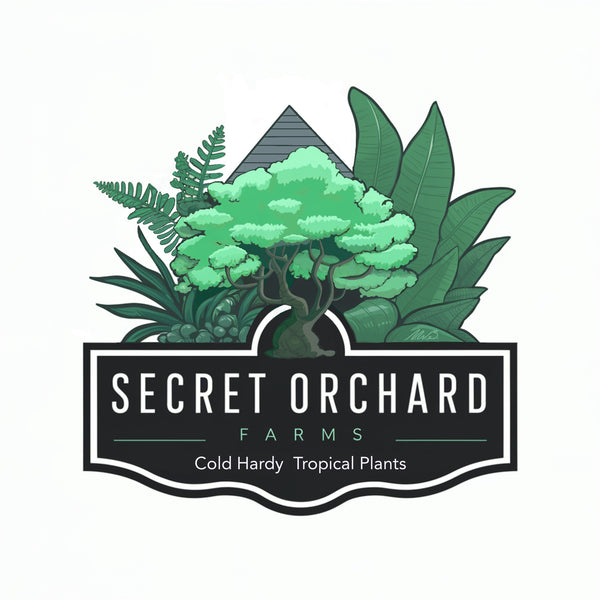
Discovering the Exotic Beauty of Tropical Plants in the Northwest
The Pacific Northwest may not be known for its tropical climate, but there are many beautiful tropical plants that can thrive in temperate climates. From towering palms to lush bamboo, these plants can add a touch of exotic beauty to any garden or landscape. Here are a few tropical plants that grow in the Northwest.
Chinese Windmill Palm
The Chinese Windmill Palm, also known as Trachycarpus fortunei, is a native of China and is one of the hardiest palm species. It's a unique tree that adds a tropical touch to any garden, even in the cooler climate of the Pacific Northwest.
The tree's large, fan-shaped leaves give it a snazzy look. When mature, this tropical looking palm can grow up to 40 feet tall!
Chinese Windmill Palm can tolerate cooler temperatures. The tree is hardy and can withstand temperatures as low as 5°F (-15°C), which is much lower than many other palm species.

Bamboo
Bamboo is a cold hardy plant that is known for its ability to thrive in a variety of environments, including the Pacific Northwest. With its lush foliage and tropical appearance, bamboo is an excellent choice for landscaping, adding a touch of exoticism to any garden design.
Japanese Timber, has the thickest stems for the area and can reach wopping 50 feet in height. Its easy to create a screen considering the pace these things grow.
The Golden Crooked Stem bamboo does well Pacific Northwest, thanks to its striking appearance and unique twisted stems that are a vibrant golden color when mature, and rusty bright red when the canes are coming up in the spring.
 For those looking for a darker, more dramatic option, the Black Bamboo will give you chills. With black stems that contrast beautifully against the lush green foliage, this bamboo can add a touch of mystery in the forefront or the background.
For those looking for a darker, more dramatic option, the Black Bamboo will give you chills. With black stems that contrast beautifully against the lush green foliage, this bamboo can add a touch of mystery in the forefront or the background.There are also many popular clumping bamboo varieties, including Bambusa Oldhamii and Fargesia Robusta. Low-maintenance is name of the game, just get them into the ground and watch them grow.

For those looking for a darker, more dramatic option, the Black Bamboo will give you chills. With black stems that contrast beautifully against the lush green foliage, this bamboo can add a touch of mystery in the forefront or the background.
There are also many popular clumping bamboo varieties, including Bambusa Oldhamii and Fargesia Robusta. Low-maintenance is name of the game, just get them into the ground and watch them grow.
 Metapanax
Metapanax
metapanax delavayi, is another evergreen plant that is known for its exotic, tropical appearance. With its stringlike, glossy leaves that look like skinny hands and striking form, the Metapanax or false ginsing is an excellent choice for adding a touch of elegance and sophistication to any garden design. This is one you can shape into an umbrella or let it bush out.
The Metapanax plant has the ability to grow in a variety of soil types. This plant can tolerate both dry and moist conditions, making it an ideal choice for gardens in a range of climates.
With its strong smells (almost Christmas tree smell) and evergreen characteristics Meta panax is a no brainer. The false ginseng is sure to impress, just make your you throw a few hardy bananas in the background to really get things popping.

Hardy bananas
There are a few different banana varieties that do well in temperate climates. Musa basjoo is one of those. These hardy plants can tolerate cooler temperatures and even frost, making them an excellent choice for gardeners in a range of climates. Oh, and did I mention there are purple verities as well? Hardy Bananas can grow up to 16 feet tall, while the Golden lotus Dwarf Banana is a smaller variety, reaching only 6 feet tall.
The leaves and stems are an extremely good source of biomass, oh and shade. They can also be used on the grill wrapping meat or veggies with broad leaf. The world is heating up so grab a young coconut and sit under these large leaves to cool off.
.jpg/:/cr=t:0%25,l:0%25,w:100%25,h:100%25/rs=w:1280) Tetrapanax
Tetrapanax Tetrapanex, also known as Tetrapanax papyrifer, can grow up to 10 feet tall, adding that tropical ambarella effect to a yard. This one has broad, lush leaves, which can reach up to 3 feet in diameter. These large leaves are deeply lobed and have a strange appearance. Whenever I show my yard off to friends the Tetrapanex is usually pointed to first. Be careful though, this thing has been known to give rashes to people that have sensitive skin. Plant in a place that is hard to grab. Also, it should be known that the tetra panax can be invasive.
Tetrapanex, also known as Tetrapanax papyrifer, can grow up to 10 feet tall, adding that tropical ambarella effect to a yard. This one has broad, lush leaves, which can reach up to 3 feet in diameter. These large leaves are deeply lobed and have a strange appearance. Whenever I show my yard off to friends the Tetrapanex is usually pointed to first. Be careful though, this thing has been known to give rashes to people that have sensitive skin. Plant in a place that is hard to grab. Also, it should be known that the tetra panax can be invasive. 
Eucalyptus
Eucalyptus is a fast-growing tree with fragrant leaves papery bark and is also used in aromatherapy for its calming properties. One of the best things about this plant is that it doesn't lose its leaves in the winter. Eucalyptus can tolerate cooler temperatures, but not all strains can survive in the Pacific Northwest.
There are several species of Eucalyptus that can survive in the Pacific Northwest, including Eucalyptus gunnii, Eucalyptus dalrympleana, eucalyptus nicholii, eucalyptus perriniana, and Eucalyptus pauciflora (my favorite). They are known to tolerate harsh enviornments from super-hot to colder temperatures than other varieties of Eucalyptus. Eucalyptus gunnii, also known as the Cider Gum, is particularly well-suited to the Pacific Northwest climate and can grow up to 50 feet tall. When choosing Eucalyptus plants for temperate climates, it is important to select hardy varieties and to plant them in a sheltered location that is protected from wind and extreme cold.
Warning these trees can be allelopathic and could attract koala bears. Those things are cute but kind of mean.
Cherry Laurel is an evergreen shrub with deep green, glossy leaves that can grow up to 8 inches long. It produces clusters of fragrant white flowers in the spring, followed by small black berries in the summer. Cherry Laurel is a versatile plant that can be used as a hedge, screen, or as a focal point in a tropical garden.
Most don't know this but you can train them into a tall tree by cutting off some of the tree arms. Instead of it being more of a bush it can create a bunch of shade if needed.
.jpeg/:/cr=t:0%25,l:0%25,w:100%25,h:100%25/rs=w:1280)
These tropical plants are known for their large leaves and striking flowers colors ranging from red, orange, pink, to yellow. Canna lilies are also valued for their lush foliage, which can create a tropical atmosphere. You can split and make more and more babies if you choose. It’s not my favorite because it dies down in the winter, but I like to keep them around.
An important pro tip for growing healthy tropical trees is to use plenty of wood chips. Woodchips can be easily obtained for free through the website chipdrop.org. By adding mushroom compost or mushroom blocks to the woodchips, you can create a nutrient-rich soil that will allow you to grow food on the ground in shaded areas. Oyster mushrooms, chestnut mushrooms, and turkey tail are excellent mushroom varieties that can be plugged directly into the ground.
